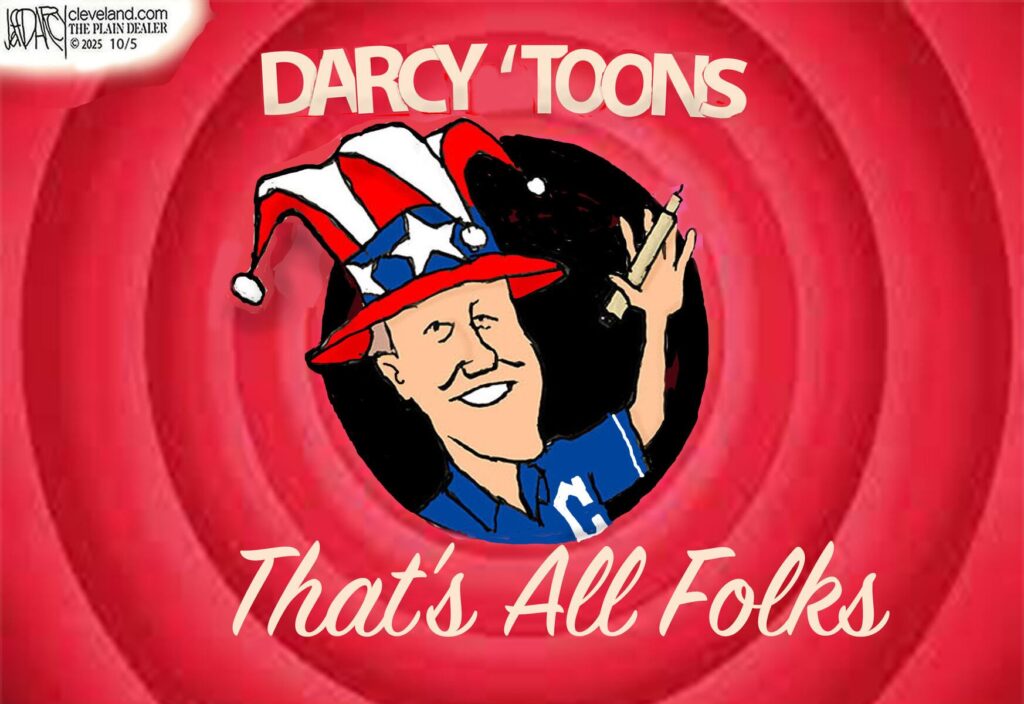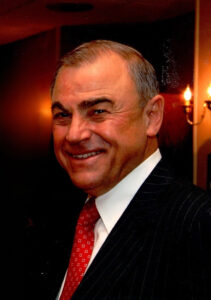
Cleveland cartoonist Jeff Darcy has announced his departure from editorial cartooning after nearly 40 years in the industry, with the last 32 years dedicated to The Plain Dealer and Cleveland.com. As only the fourth primary editorial cartoonist in the history of The Plain Dealer, Darcy leaves behind a legacy defined by sharp commentary and artistic insight.
His journey began at Sun Newspapers, where he gained recognition for his work. Darcy credits his early success to the departure of renowned cartoonist Bill Watterson, whose rise with the strip “Calvin and Hobbes” allowed Darcy to fill the gap left in suburban weeklies. His cartoons reached a wide audience, appearing not only in local publications but also in notable national and international outlets, including Time, Fox News, and Good Morning America.
Darcy’s work earned him significant accolades, including being a finalist for the Pulitzer Prize in 2013 and induction into the Cleveland Press Club Hall of Fame. Reflecting on his career, he noted that the engagement from readers, with over 1,000 comments on some of his posts, provided a sense of fulfillment that surpassed formal recognition.
Building a Legacy in Cleveland
Darcy’s connection to The Plain Dealer began long before his tenure as a cartoonist. He grew up in a household that valued journalism, with his parents subscribing to the newspaper and his brother delivering it as a teenager. This early exposure fostered a deep appreciation for the publication, which he described as a “dream job” to work for.
His relationship with the editorial team evolved over the years. In the mid-1980s, he met with then-editor Dennis Ryerson, who recognized his talent and considered him a candidate to succeed the retiring cartoonist Ray Osrin. Though Osrin remained for several more years, Darcy used this time to hone his craft, contributing freelance illustrations to the paper’s opinion pages under Mary Ann Sharkey.
When the opportunity finally arose in 1993, Darcy took over the editorial cartoonist role. His cartoons often tackled pressing issues in Cleveland politics, with a special focus on figures like former Mayor Mike White. Over the years, his work not only captured local sentiments but also found a place in broader national discussions, including significant political events and cultural shifts.
Reflecting on Impact and Future
As Darcy steps away from his career, he looks back fondly on the historical events he has witnessed and commented on through his art. His cartoons have addressed a wide range of topics, from local governance to national scandals, including the ramifications of COVID-19, the 9/11 attacks, and the election of Barack Obama as the first Black U.S. President.
Even as he departs, Darcy leaves a body of work that resonates with many, showcasing the power of editorial cartoons to engage, provoke thought, and inspire dialogue. His final works serve as a testament to a career defined by creativity and a commitment to the craft of cartooning.
In closing, Jeff Darcy’s departure marks the end of an era for Cleveland’s editorial landscape, but his contributions will continue to be celebrated by readers and fellow artists alike. His unique voice and perspective have left an indelible mark, ensuring that his legacy will be remembered for years to come.






